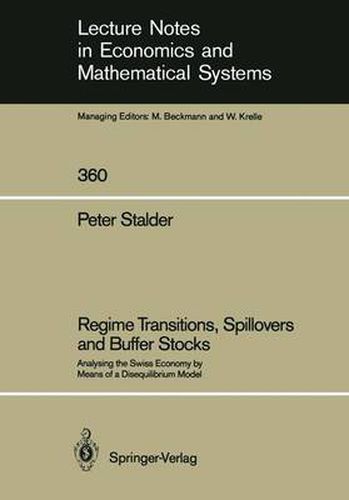Readings Newsletter
Become a Readings Member to make your shopping experience even easier.
Sign in or sign up for free!
You’re not far away from qualifying for FREE standard shipping within Australia
You’ve qualified for FREE standard shipping within Australia
The cart is loading…






This title is printed to order. This book may have been self-published. If so, we cannot guarantee the quality of the content. In the main most books will have gone through the editing process however some may not. We therefore suggest that you be aware of this before ordering this book. If in doubt check either the author or publisher’s details as we are unable to accept any returns unless they are faulty. Please contact us if you have any questions.
This book presents an econometric modelling approach to analyzing macroeconomic disequilibria, focusing on the market for goods and labour and the spillovers between these markets transmitted through the decisions of companies during the production cycle. The macroeconomic markets are treated as heterogeneous aggregates, consisting of a multitute of micro-markets on which demand/supply ratios differ. Disequilibrium models have been criticized because they ignore the fact that inventories enable firms to smooth production over any particular cycle. The author argues that buffer stocks (output inventories, unfilled orders) should be accounted for within the disequilibrium framework, giving rise to a dynamic modification rather than a fundamental invalidation of rationing and spillover effects. The model developed in this book combines traditional Keynesian-type analysis with supply-side considerations and at the same time allows for micro-level imbalance. The resulting econometric structure is inherently nonlinear, reflecting the view that the response of economic activity to demand-side and supply-side factors varies over the cycle, depending on the aggregate mix of regimes. The model detailed in this study has been estimated with quarterly data for Switzerland. Various simulation experiments demonstrate the potential of this type of model for empirical business-cycle analysis and policy discussions. This monograph on econometrics and macroeconomics is intended for researchers.
$9.00 standard shipping within Australia
FREE standard shipping within Australia for orders over $100.00
Express & International shipping calculated at checkout
This title is printed to order. This book may have been self-published. If so, we cannot guarantee the quality of the content. In the main most books will have gone through the editing process however some may not. We therefore suggest that you be aware of this before ordering this book. If in doubt check either the author or publisher’s details as we are unable to accept any returns unless they are faulty. Please contact us if you have any questions.
This book presents an econometric modelling approach to analyzing macroeconomic disequilibria, focusing on the market for goods and labour and the spillovers between these markets transmitted through the decisions of companies during the production cycle. The macroeconomic markets are treated as heterogeneous aggregates, consisting of a multitute of micro-markets on which demand/supply ratios differ. Disequilibrium models have been criticized because they ignore the fact that inventories enable firms to smooth production over any particular cycle. The author argues that buffer stocks (output inventories, unfilled orders) should be accounted for within the disequilibrium framework, giving rise to a dynamic modification rather than a fundamental invalidation of rationing and spillover effects. The model developed in this book combines traditional Keynesian-type analysis with supply-side considerations and at the same time allows for micro-level imbalance. The resulting econometric structure is inherently nonlinear, reflecting the view that the response of economic activity to demand-side and supply-side factors varies over the cycle, depending on the aggregate mix of regimes. The model detailed in this study has been estimated with quarterly data for Switzerland. Various simulation experiments demonstrate the potential of this type of model for empirical business-cycle analysis and policy discussions. This monograph on econometrics and macroeconomics is intended for researchers.